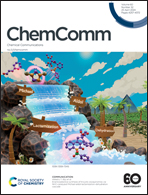Biphasic modulation of tau liquid–liquid phase separation by polyphenols†
Abstract
Molecular tools that modulate tau liquid–liquid phase separation (LLPS) promise to treat tauopathies. We screened a set of polyphenols and demonstrated concentration-dependent biphasic modulation of tau LLPS by gallic acid (GA), showcasing its ability to expedite the liquid-to-gel transition in tau condensates and effectively impede the formation of deleterious fibrillar aggregates.

- This article is part of the themed collection: ChemComm 60th Anniversary Collection


 Please wait while we load your content...
Please wait while we load your content...